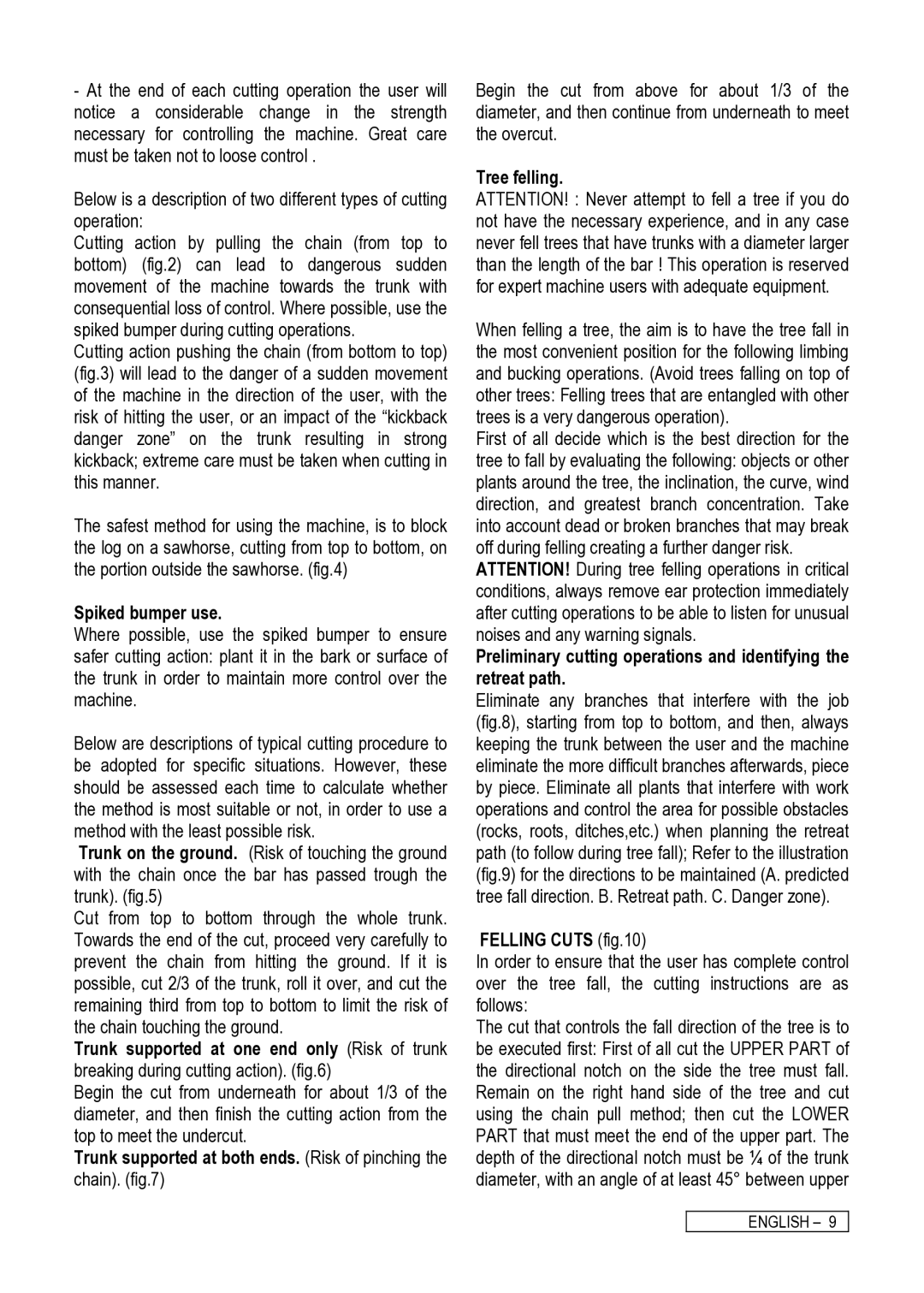316, 235, 95390048600, 95390028700 specifications
The McCulloch 95390028700 and 95390048600 are two powerful chainsaw models renowned for their reliability and performance in both professional and domestic applications. These models are designed to handle various cutting tasks, making them a favorite among landscaping professionals, arborists, and hobbyists alike.One of the primary features of the McCulloch 95390028700 is its robust engine. It typically comes equipped with a high-output, two-stroke engine, which delivers impressive cutting power while maintaining fuel efficiency. This efficiency is further enhanced by the incorporation of advanced engine technology that minimizes emissions, aligning the tools with modern environmental standards.
In contrast, the McCulloch 95390048600 boasts a similar engine configuration but is often distinguished by its lighter weight, making it more user-friendly for extended use. Both models feature an ergonomic design, which ensures a comfortable grip and reduces fatigue during prolonged cutting sessions. This attention to user comfort is critical when tackling extensive projects or challenging tasks.
The cutting chains of both models are engineered for maximum life and performance, equipped with sharp teeth that slice through wood with ease. The easy-to-use tensioning system allows users to quickly adjust the chain tension for optimal performance, ensuring consistent cuts and maximized efficiency.
Both chainsaws also emphasize safety features, including chain brake systems that reduce the risk of injury. These safety mechanisms engage automatically in the case of kickback, providing peace of mind while operating such powerful tools.
In terms of maintenance, McCulloch has designed these models to be user-friendly, with easy access to the air filter and spark plug, ensuring that routine maintenance can be performed without hassle. This aspect is vital for maintaining peak performance over the life of the chainsaw.
Among the notable advancements in these models is the inclusion of vibration reduction technologies, which minimize user fatigue. This feature is particularly important for users who spend long hours operating the chainsaw, ensuring that they maintain control and accuracy throughout their tasks.
In summary, the McCulloch 95390028700 and McCulloch 95390048600 are exemplary chainsaw models that combine cutting power, user comfort, and advanced safety features. With their durable design and efficient engine technologies, these chainsaws are built to meet the demands of both professionals and DIY enthusiasts, providing exceptional performance and reliability for a wide variety of cutting tasks.
